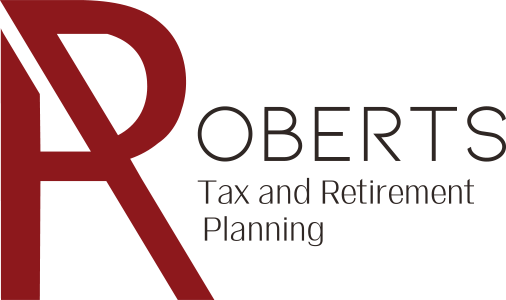Sustainable spending in retirement is a key consideration for those planning for their golden years. With careful budgeting and financial planning, retirees can ensure that their savings last throughout their retirement years. It is important to understand how much money can be safely withdrawn yearly, while still maintaining a comfortable lifestyle.
In this article, we will discuss the principles of sustainable spending and how retirees can use it to manage their finances. We will also provide tips on creating a budget and investing wisely to ensure that retirement savings last. With the right tools in place, retirees can manage their finances and achieve financial freedom.
What Is Sustainable Spending?
Sustainable spending is a financial strategy that allows you to withdraw an amount of money from your retirement savings that can be sustained over the long term without depleting your savings. This type of spending strategy is designed to deliver a steady income over an extended period, such as during retirement. Sustainable spending is not just about how much you withdraw, but also the timing and frequency of withdrawals.
What Is the Purpose of Sustainable Spending?
The purpose of sustainable spending is to ensure that you do not outlive your retirement savings. It’s also important to maintain a certain quality of life as you age. Sustainable spending provides a way to do that while also preserving your assets for the future.
The purpose of sustainable spending is to:
- Provide a steady source of income for a long time
- Help you maintain a certain standard of living during retirement
- Preserve your assets for future use
- Provide tax-advantaged income
- Avoid running out of money during retirement
- Reduce the risk of inflation eroding your purchasing power over time
When determining your sustainable level of spending, the key is to ensure that the withdrawal rate remains at a safe enough level that won’t deplete your funds too quickly.
What Is a Sustainable Withdrawal Rate?
A sustainable withdrawal rate is the amount you can withdraw from your retirement savings each year and still have funds left when you reach life expectancy. It is a key factor in determining how much you can safely withdraw while being financially secure in retirement.
How to Determine a Sustainable Level of Spending
When it comes to retirement planning, many individuals overlook the importance of sustainable spending. While it may be tempting to spend freely and enjoy life during retirement, it’s important to consider the long-term implications of your spending decisions.
The most important step in determining a sustainable level of spending is to understand your retirement goals and how to reach them. To do this, it’s important to create a budget that reflects your current spending and saving habits. Once you have determined how much income you can expect to receive from sources such as Social Security, pensions, and investments, you can begin to calculate a reasonable level of spending.
To determine a sustainable level of spending, you should consider the following factors:
- Your age
- The amount of money you have saved for retirement
- Your investment portfolio’s rate of return
- Your anticipated future expenses
- Taxes and other fees
It’s also important to consider inflation when budgeting for retirement. Inflation steadily increases the cost of goods and services, so it’s important to factor in inflation when establishing a budget. The best way to do this is by considering the cost of goods and services in the future rather than the current cost.
Some of the most common approaches to determining a sustainable level of spending include:
- The 4% Rule – This is a widely accepted rule which states that you can withdraw up to 4% of your total retirement savings each year and still have enough funds left at the end of life expectancy.
- The Bucket Approach – This approach involves dividing your retirement savings into three “buckets”. These include a short-term bucket for immediate needs, a medium-term bucket for intermediate needs, and a long-term bucket for long-term needs.
How to Use the Bucket Approach for Sustainable Spending
Sustainable spending can be used to cover a variety of expenses, such as basic living expenses (e.g., housing, food, transportation) as well as more discretionary expenses (e.g., travel, recreation). It can also be used to cover taxes and insurance premiums. In addition, sustainable spending can also be used to provide a steady income stream for retirement, such as through annuities or dividend-paying stocks.
The bucket approach can be used to create a unique sustainable spending plan. The key is to divide your retirement savings into three buckets: short-term, medium-term, and long-term. The short-term bucket should contain enough money to cover expenses for at least two years, the medium-term bucket should contain enough to cover expenses for four to six years, and the long-term bucket should contain enough for 10 or more years.
You can then use the buckets to create a sustainable spending plan by withdrawing from each bucket, in turn, over time. This allows you to withdraw from the short-term bucket first, and then use the medium-term and long-term buckets later on.
Creating a Budget and Sticking To It
Creating a budget is an essential part of developing a sustainable spending plan. This involves tracking your income and expenses on a regular basis to ensure that you are staying within your spending limits.
When creating a retirement budget, it’s also important to consider the cost of health care. Health care expenses tend to increase with age, so it’s best to plan for these expenses as early as possible.
Additionally, it is important to regularly review your budget and make adjustments as needed. A budget also helps you identify areas where you could be saving money, such as reducing unnecessary expenses or increasing your savings rate. It also helps to ensure that you are not spending more than you can afford.
Investing Wisely for Retirement
In addition to creating a budget, it is important to invest wisely for retirement. This involves carefully considering the type of investments you make and balancing your portfolio to reduce risk.
It is important to choose investments that are likely to provide a steady income stream and maintain their value over time. This could include stocks, bonds, mutual funds, and annuities. Additionally, it is important to diversify your investments across different asset classes to reduce risk and maximize returns.
By investing wisely for retirement, you can ensure that your savings and investments will last throughout your retirement years. Spending wisely for retirement can help you enjoy a secure and comfortable retirement.
Final Thoughts
Sustainable spending is a key part of budgeting in retirement. It’s important to find the right balance between withdrawing too much and not having enough to live on. The purpose of sustainable spending is to ensure that your money lasts throughout retirement and the goal is to maximize your income while minimizing risks and expenses.
It’s important to remember that retirement savings should be considered long-term investments rather than short-term spending. Retirement is a long-term proposition, and it’s important to plan for the future. Explore your options, create a budget, and invest wisely so you’ll be well on your way to creating a sustainable spending plan for your retirement.
Planning and careful management are the keys to success. With proper planning and the right approach, you can enjoy a secure, comfortable retirement for years to come. Roberts Tax and Retirement Planning is here to help you create a sustainable spending plan that helps you make the most of your retirement. Contact us today to get started.








